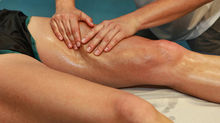GrowFit: Pilates, Strength and Balance for Kids and Teens
- The Studio Team
- Jan 31, 2024
- 3 min read
The growing body
As we grow and develop from infants to teens our bodies change rapidly and significantly in form and capacity. When babies are born their “bones” are made up of flexible cartilage called growth plates. In each long bone section there are usually two growth plates which will add length and width. As children grow, the growth plates harden into solid bones - closing or fusing together and TA-DA a complete, mature adult bone is formed. This adolescent growth occurs at slightly different stages for genders. Females will generally have growth spurts between the ages 10 and 14 and males between 10 and 16 years.
Now let's talk about soft tissues. This includes muscles and tendons which surround, attach to and support bones, joints and organs. Once again, growth times differ between genders. Girls reach skeletal maturity from 14 to 17 and boys about 18-22. With muscular development we see improvements in gross motor skills such as running and jumping. Children with established muscle strength also gain coordination and balance skills which help them achieve more specific tasks for sport or daily activities such as climbing stairs, changing directions or manipulating sporting or play equipment.
Common complaints in teens
Due to the rapid and differing rates of change and development in both bones and soft tissue - kids and teens are often victims of growth related aches and pains - some so significant they can heavily affect physical participation. Common conditions we see and that you may have heard of include Severs and Osgood-schlatter’s disease. These conditions are mostly caused by overuse, change in sporting activities or due to rapid periods of growth coupled with irregular loading (hello school holidays and intensive training camps).
Physiotherapy is the recommended treatment for these conditions. Treatment includes education and advice tailored to the individual - Physio’s should take into consideration the physical wants and needs of each child when providing loading restrictions. Rehabilitation in the form of exercises; stretching what’s tight and strengthening what’s weak!
Hypermobility is another common presentation in children worth mentioning. Hypermobility refers to an increased range of movement in multiple joints for a child’s age - found in up to 10% of school age children. Without the proper ‘primary’ support around these hypermobile joints - kids can experience joint pain and even dislocation. The recommended management and harm prevention is supervised exercise. Pilates is a brilliant option - helping to safely increase strength, balance and joint health and stability. A 2019 study of school aged children with hypermobility in Glasgow looked at the effectiveness of a 6 week core program. The results demonstrated significantly improved muscular endurance of the trunk, movement capability, flexibility and balance!
(Paediatric and Adolescent Rheumatology Team Royal Hospital for Children Glasgow 2019)
What are the recommendations and benefits of youth exercise?
It is recommended by the Australian Government that children and young people aged 10-17 do at least 60 minutes each day of moderate to vigorous physical activity. This should include at least 3 days per week of muscle and bone strengthening.
Now the how and what? Pilates has been long demonstrated as an effective form of exercise for injury prevention and strengthening.
A systematic review conducted to evaluate the effectiveness of Pilates intervention on physical function in children and youth demonstrated that Pilates:
· Improves flexibility
· Improves strength
· Improves postural control
· Reduces pain
(Hornsby E, Johnston LM 2020)
It has also been reported that children who have participated in a variety of sporting activities and exercises from a younger age develop a variety of different skills that then translate into their sporting abilities later in life.
Along with the physical benefits, exercise participation has significant and varied flow on effects:
A chance to make new friends and develop social skills
Build stronger cooperation and teamwork skills
Increase self esteem and confidence
Reduce symptoms of stress or anxiety
Lower risk of unhealthy weight gain
And set healthy life habits to continue in life.
(Australian Government, May 2021)
….enter GROWFIT
Classes are suitable for children aged 8 - 14yrs and are designed to cater to the needs of the growing body - with a fun combination of exercises to improve core strength, coordination and balance whilst of course building general strength, resilience and confidence. Children of all levels of ability are welcome; our team is extremely experienced in exercise modification and inclusion. Participants of the NDIS (who are self managed) will of course be accommodated.
References
Hornsby E, Johnston LM. Effect of Pilates Intervention on Physical Function of Children and Youth: A Systematic Review. Arch Phys Med Rehabil. 2020 Feb;101(2):317-328. doi: 10.1016/j.apmr.2019.05.023. Epub 2019 May 30. PMID: 31152703.
Chang NJ, Tsai IH, Lee CL, Liang CH. Effect of a Six-Week Core Conditioning as a Warm-Up Exercise in Physical Education Classes on Physical Fitness, Movement Capability, and Balance in School-Aged Children. Int J Environ Res Public Health. 2020 Jul 30;17(15):5517. doi: 10.3390/ijerph17155517. PMID: 32751720; PMCID: PMC7432415.
Paediatric and Adolescent Rheumatology Team Royal Hospital for Children Glasgow 2019
Australian Government ‘For children and young people- 5 to 17 years’, May 2021,(https://www.health.gov.au/topics/physical-activity-and-exercise/physical-activity-and-exercise-guidelines-for-all-australians/for-children-and-young-people-5-to-17-years)






























Comments